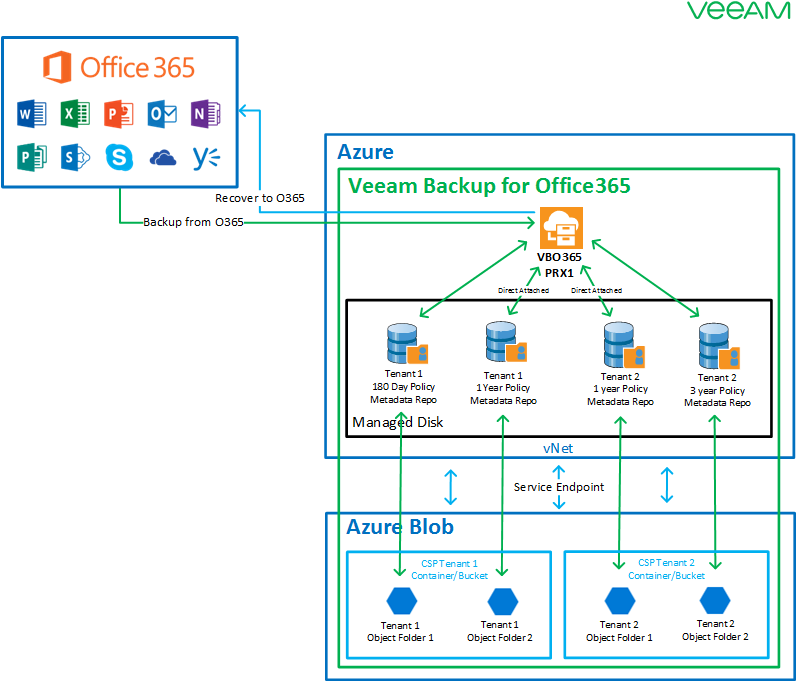(click to expand table of contents)
3. VBO365 Architecture
3.1. Simple Deployment Architecture
The simple deployment model allows a consolidated architectural approach to be sensitive to associated costs. This model can potentially support up to 16,000 objects before it should be scaled out. 16,000 objects equates to about 6,000 users based on Section 2.1 assumptions.
It requires only 1 VM and 1 object storage container/bucket for the simplest deployment, however it is recommended to provision a container/bucket per tenant for better management and segregation of data from an object storage prospective, as well as easier reporting of storage consumption per tenant.
The single server contains the VBO365 Management Role, Proxy Role, and hosts the Metadata Repository. Folders should be created for each repo within the object storage container/bucket for each retention policy assigned to each tenant, which maps to its block storage repository. Leverage a VNet Service Endpoint to minimize egress costs from the VNet to Azure Blob.
3.2. Architecture for Microsoft CSPs
Microsoft CSP’s can run the VBO environment in a non-CSP tenant account, however can provision Azure Blob Containers/Buckets from within CSP tenant accounts. This requires the creation of a Container/Bucket per tenant. The compute would run in a centralized shared services subscription while data is driven directly to a CSP Tenant’s Container/Bucket.
This means that the shared services would centrally run in a non-CSP tenant subscription but a tenant’s data would live within their own CSP tenant subscription.
3.3. Simple/CSP Deployment Architecture Diagram

3.4. 1000 User Requirements
From Section 2.2.4, 1000 users translate to approximately 2590 objects. Minimum requirements call for 4 Cores / 8GB of RAM which can process about 2000 objects. The suggested Azure VM size is an D4s v3 , as this should still be appropriate since the VBO365 management requirements would not require the full 4 Cores/8GB RAM of only 2,590 objects. However, the server should still be closely monitored as it scales up. The operating system disk should be Premium SSD. A Windows 2016 Server Template uses a P10 disk which is 128GB storage space. Refer to Section 2.3.1 for Metadata sizing to determine the appropriate managed disk size. From this section it can be determined that 64GB of storage space is needed. A managed disk, Premium SSD, P6 disk size is recommended.
